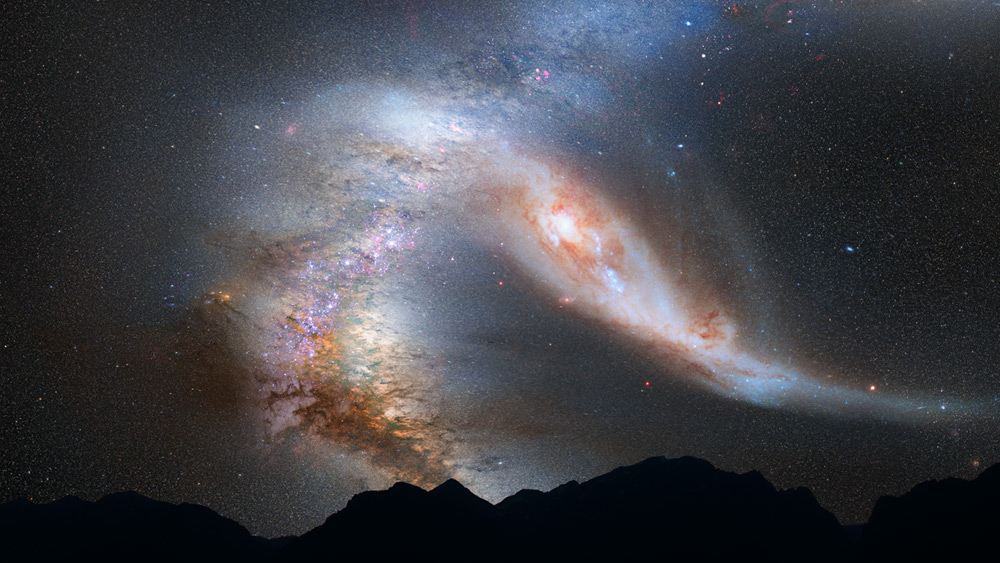We're open daily! View holiday hours
Science News
Milky Way Collision Course
June 4, 2012
by Alyssa Keimach

Our galaxy’s future foretold!
We have known for a while that the Milky Way and Andromeda—our closest neighboring galaxy, otherwise known as M31—are on a collision course, but the time frame and exact trajectory remained a mystery… until now.
With the benefit of the Hubble Space Telescope’s precise observations, astronomers predict that the collision will happen in four billion years, and that Andromeda and the Milky Way will collide head-on.
“After nearly a century of speculation about the future destiny of Andromeda and our Milky Way, we at last have a clear picture of how events will unfold over the coming billions of years,” says Sangmo Tony Sohn of the Space Telescope Science Institute (STScI).
The Hubble telescope is a highly precise orbiting telescope capable of measuring the Doppler shift of distant stars. Hubble can calculate the radial velocity of a star by comparing its spectrum to a stationary light source. We can measure the movement of stars from Earth-bound observatories too, but Hubble offers a better vantage point for astronomers to see the transverse motion of Andromeda’s stars.
But wait a minute, you’re saying, didn’t I learn that the Universe is expanding? Yes, the Universe is accelerating outwards, and yes, galaxies typically move away from each other (with the more distant galaxies flying away faster than ones nearer us). But Andromeda and the Milky Way are close, relatively speaking—only 2.5 million light years apart—so their mutual gravity overcomes the overall expansion of the Universe to make the collision possible. An exception to the overall rule of expansion.
This event is exceptional in another sense too—Andromeda and the Milky Way are the most massive galaxies within the “Local Group,” the cluster of galaxies in our neighborhood of the universe. Furthermore, most of the galaxies in the Local Group, besides the Milky Way and Andromeda, are elliptical galaxies rather than spiral galaxies.
Andromeda is moving towards us at about 100 kilometers per second. At that speed, you could travel from Earth to the Moon in one hour! By the time Andromeda reaches us, our Sun is likely to have consumed most of its hydrogen—on its way to becoming a red giant.
The Milky Way and Andromeda each have a supermassive black hole at their centers, and the merger of these two highly gravitational cores would be the source of most of the chaos.
“In the worst-case-scenario simulation, M31 slams into the Milky Way head-on and the stars are all scattered into different orbits,” says Gurtina Besla of Columbia University. “The stellar populations of both galaxies are jostled, and the Milky Way loses its flattened pancake shape with most of the stars on nearly circular orbits. The galaxies’ cores merge, and the stars settle into randomized orbits to create an elliptical-shaped galaxy.”
The event seems intimidating and scary, but not to worry—although the galaxies will plow into each other, stars inside each galaxy are so far apart that they will not collide with one another during the encounter. Simulations show that our solar system will probably be tossed much farther from the galactic core than where it lies today.
Galaxies include more than stars, however. The gas and dust between the stars will interact more vigorously, most likely fueling a burst of star formation in the newly-formed elliptical galaxy.
And remember, it won’t happen for four billion years!
To view a simulation of the collision, click here.
Alyssa Keimach is an astronomy and astrophysics student at the University of Michigan and volunteers for the Morrison Planetarium.
Image: NASA, ESA, Z. Levay and R. van der Marel (STScI), and A. Mellinger